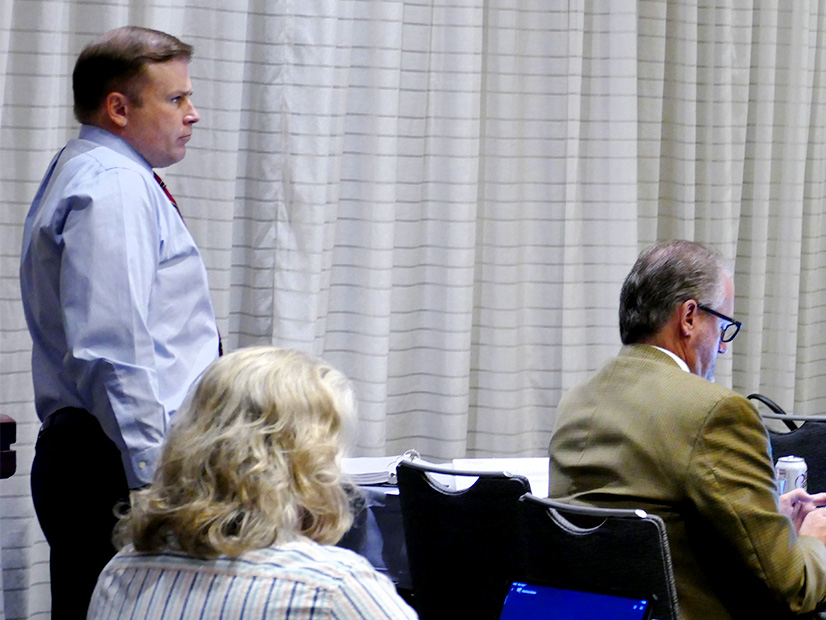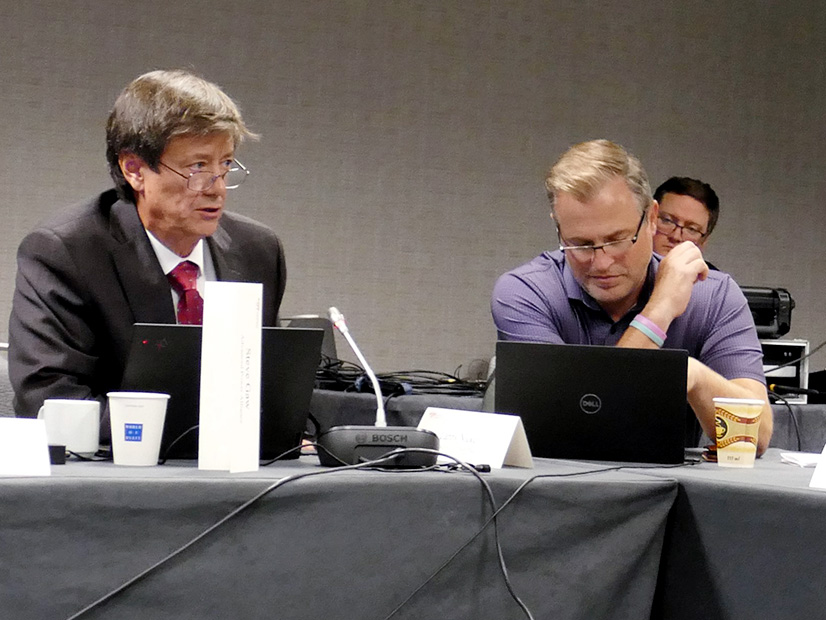Northwest electricity sector stakeholders this week expressed divisions over the Bonneville Power Administration’s plan to pursue an aggressive timeline for deciding whether to join CAISO’s Extended Day-Ahead Market (EDAM) or SPP’s Markets+.
BPA’s decision will carry significant weight in the Northwest, where the federal power marketing agency controls more than 22 GW of mostly hydroelectric generation, operates 70% of the transmission grid and serves dozens of large customers, including the region’s extensive network of publicly owned utilities.
Its choice also could influence the decisions of system operators elsewhere in the West. Supporters of the accelerated timeline seem to be hoping for such an outcome, not only to boost the clout of BPA but of the Northwest in general.
“We’ve been followers for far too long, and we actually have a chance here to be a leader — and, yes, that means sticking our neck out there a little bit,” Shawn Smith, managing director of energy resources at Chelan County (Wash.) Public Utility District, said Monday at a BPA public workshop to discuss the day-ahead market decision. Smith was referring to a view shared by many in the region that public power entities became involved in CAISO’s Western Energy Imbalance Market (WEIM) too late to hold much sway in its initial development.
“I think it’s really important for BPA to come out and express where they’re leaning [in] Q1 of next year,” said Laura Trolese, director of Western markets strategy at The Energy Authority, which provides energy market services to public power entities.
Trolese noted the region is facing a wave of changes related to resource adequacy, state climate policies and organized electricity markets.
“It’s moving at a pace that we’ve never seen, but we have to start making decisions and move forward with all of the uncertainty and figure things out as we go. We just can’t wait for everything to be figured out before BPA makes a decision,” she said. “At that point, there’s no decision to make, so I really appreciate these guys stepping up and starting this process.”
Michael Linn, director of market analytics at the Public Power Council, acknowledged that SPP has not yet completed a Markets+ tariff and many issues related to the initiative remain outstanding. (The RTO expects to file with FERC in early 2024.)
“But we know about governance; we know about some price formation. And, frankly, the way Bonneville signals or leans may ultimately kind of determine a path forward for either of these markets,” Linn said. “So I think it’s important to acknowledge that … indecision at this point is a decision and it almost is a forfeiture of our leverage as a region [that has] a lot of transmission and hydropower.”
‘Crucially Important’
Other meeting participants questioned the need for such speed.
Speaking on behalf of the Western Public Agencies Group, which represents Oregon and Washington public utilities involved in BPA proceedings, Lea Fisher contended that BPA’s process for joining the WEIM and the Western Power Pool’s Western Resource Adequacy Program (WRAP) seemed more “substantive” than the process envisioned for choosing a day-ahead market. Fisher pointed out that BPA has proposed a seven-month process consisting of five workshops, compared with a 14-month process with 10 workshops for the WRAP and a five-phase, three-year process for joining the WEIM.
“You can see how the process BPA has currently outlined for the decision to join a day-ahead market seems light in comparison,” she said, asking whether there would be another “follow-on” process after the agency made its determination.
Matt Hayes, BPA program manager and policy analyst, said the seventh-month process would be “analogous” to the agency’s initial process for deciding to join the WEIM, which would be followed by a “much longer” process related to implementation.
But chief among the skeptics of BPA’s timeline was Fred Heutte, senior policy associate with the Northwest Energy Coalition (NWEC), who said the “big question” was the uncertainty around FERC’s responses to the EDAM and Markets+ tariff filings. Heutte said the EDAM filing was “very complete,” but took five years to put together, while “much, much less time” has been spent on developing Markets+.
“And it’s really evident sitting in some — not all — of the Markets+ meetings, that there are a lot of key pieces that haven’t yet been hammered down,” he said, adding that NWEC is “feeling a bit of unease about the schedule.”
“I think you’re just articulating the challenge and sort of the misery of what my group deals with on a daily basis,” Russ Mantifel, BPA director of market initiatives, said. “But other entities are making decisions, right? But Bonneville is not in a vacuum, where we get to have self-determination over exactly what all of our options are going to be. And I’ve never delivered what has been considered to be good news. I’ve never run a process where people thought we had enough time.”
Heutte said BPA faces a “crucially important” choice.
“Among other things, it’s a choice to leave the EIM after taking so long to get into it and realize some real value from it. And the big thought that I have right now is, look before we leap,” he said.
‘Not Equally Distributed’
If NWEC’s reservations about the timeline are colored by a concern that BPA could stymie the potential for a single West-wide electricity market by choosing Markets+ over EDAM, then BPA officials did little to assuage that concern on Monday.
Industry sources not authorized to speak on behalf of their organizations have told RTO Insider that BPA is favoring Markets+ — in part because of an in-depth economic study commissioned by the Western Markets Exploratory Group to ascertain Western market benefits.
The sources said the study, which has not been released to the public, shows that, in a single market, a disproportionate share of the benefits would flow to California, while a two-market solution would provide greater financial benefits to BPA and the Northwest at large.
Mantifel spoke around the specifics of the study on Monday but appeared to confirm that assessment.
“The results are complicated … and identifying who receives which benefits is also an important part. Societally, a broad footprint produces more diversity, more optimization [and] produces more benefits, but I think they’re not equally distributed,” he said.
BPA plans to hold a call on Oct. 23 to discuss the “quantitative results” of the study related to the agency, he said.
During the meeting, Mantifel also praised BPA’s experience in working with SPP during the Markets+ design process.
Responding to a question about whether BPA preferred SPP’s stakeholder-driven process for dealing with market initiatives over CAISO’s staff-led approach, he said, “I think we’ve really enjoyed our experience with the SPP process. Being engaged in it is difficult; sometimes it feels messy. But that process, I think, is a good representation of how representative that organization is.”

